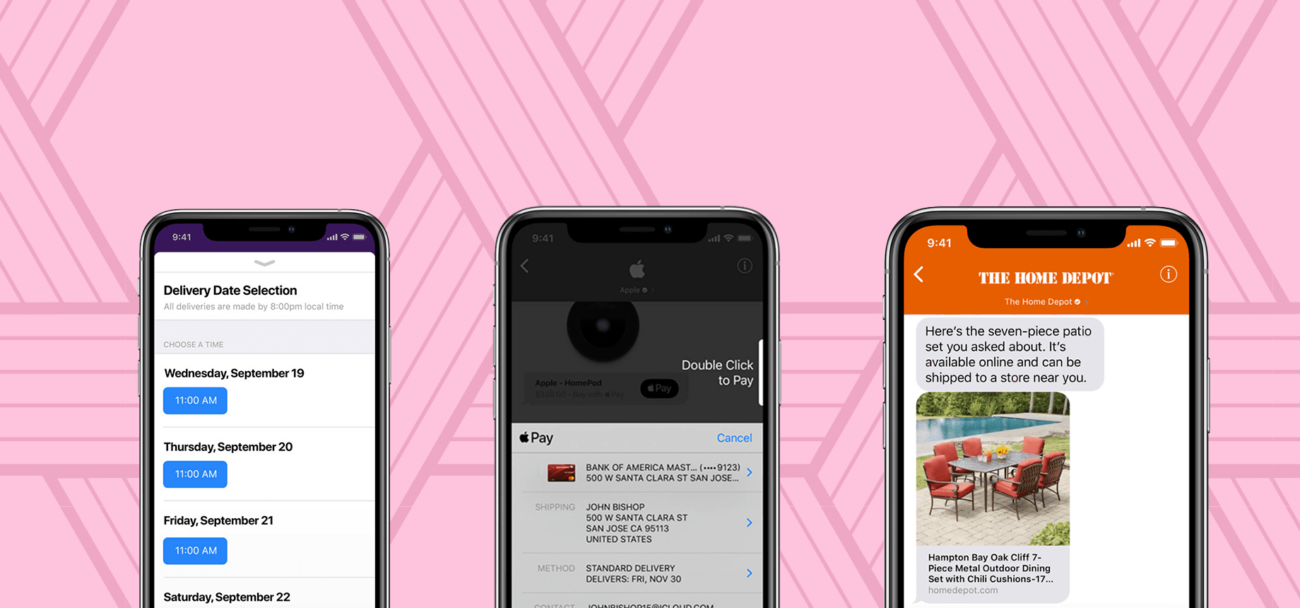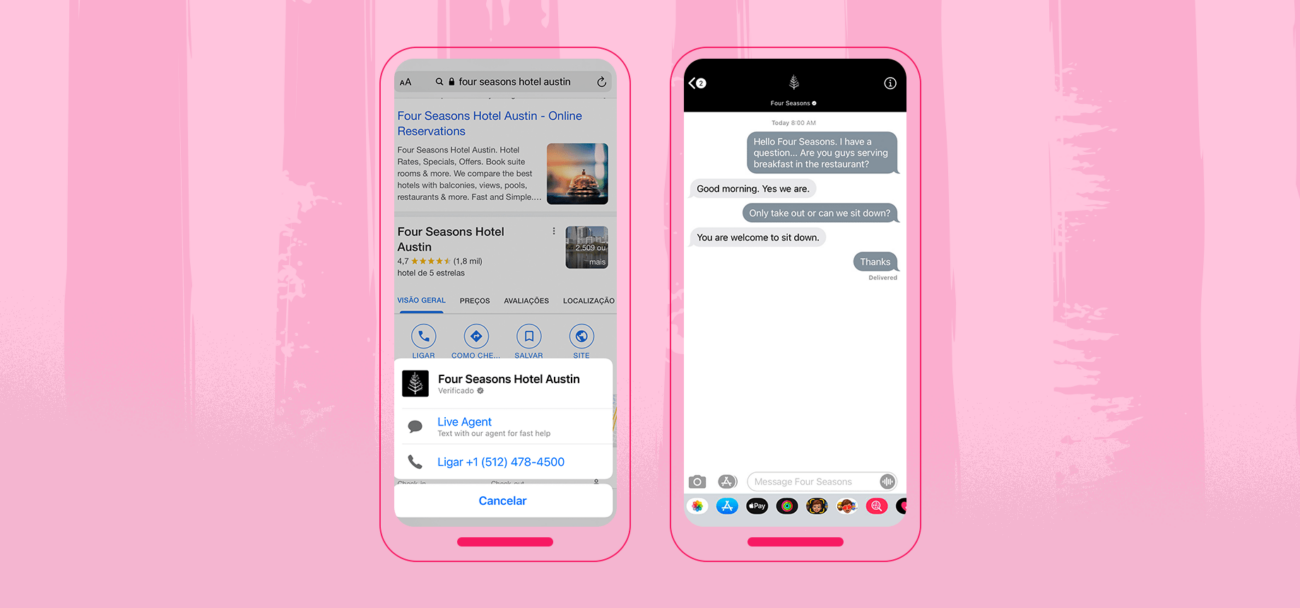
Conversational commerce is an unstoppable tsunami. It is already a reality in many countries and in the next 3 to 5 years will be the new normal for US retailers and brand manufacturers.
When COVID-19 arrived, it accelerated the path towards digital commerce. All retailers and brand manufacturers adapted to the digital world to survive the temporary extinction of in-person interactions while the pandemic peaked.
Recently, humans have delved into a new way of trading called “On-Demand Commerce”: a new economic dynamic in which consumers place convenience, agility and simplicity as the fundamental requirements above price to perform a commercial transaction.
In a convenience-driven economy, businesses must get creative when transcribing the in-person shopping experience to the online game. The job of retailers and brand manufacturers is to simplify their customers’ lives while providing them with peace of mind. Selling time is the new golden goal. One way of achieving success in that regard is by developing a conversational commerce strategy.
“When brands and retailers think about streamlining the shopping experience, many hone in on the checkout process. But convenience goes well beyond this one area.
Conversational commerce and shopping via messaging apps remains in its infancy in most Western markets, but it is an area poised for significant growth. Popular messaging platforms are all clamoring to figure out their ‘super app’ strategies as this trend increasingly shifts from Asia to the US, Europe and Latin America.”
Zia Daniell Wigder, Chief Content Officer at Insider Intelligence
In essence, this new buzzword is democratizing the concept of concierge. With it, in a world where customer-centricity is real, the brand manufacturer or retailer becomes a digital concierge — an agent that assists the customer in their buying decisions.
But from the customer’s perspective, the demand to have a complete shopping experience in a messaging ecosystem exceeds the supply available on the market. The wish to have a seamless conversational commerce environment goes beyond exploring the product catalog: people want to close a purchase, track their orders and receive support without leaving the chat platform. Thankfully, the commerce industry already has a robust and solid foundation to offer them exactly that.
This is not a future trend — it is already here. We are experiencing the death of browsers.
The future of retail relies on providing an enriched commerce experience in a messaging environment so the end-user can fulfill their shopping intentions without migrating to a browser. Rest assured, though, the infrastructure that allows for a massive penetration of this presumed-to-be trend is up and running.
Here are four points that prove it.
1. Exploiting iMessage’s power in the Americas
In the US, among the instant messaging apps, Apple’s iMessage is the most popular one. Generally, it’s also the third most-used app after Instagram and Facebook. Thus, as an infrastructure provider, Apple has the upper hand to use the iMessage tool and its numerous users to its advantage.
For instance, the Apple Business Chat feature enables the customer to ask for information, schedule appointments and purchase products. If you are an iPhone user, you can pay with just a click by using Apple Pay, a complete shopping experience without leaving the iMessage conversation environment.
When it comes to interactions and support, conversations will often be with a live agent. For quicker tasks, you would receive an automated message — once again enabling businesses to become convenience-driven by killing the customer’s necessity to call and email the company for any request. This also frees up time for customer service to focus on more complex queries.

2. Leveraging Telegram’s Commerce APIs
Fully cloud-based, Telegram uses encryption and enables users to not have to share phone numbers, accessing the app with any device. The platform has an open-API architecture that allows a completely customizable shopping experience using its bots.
Through the app, businesses can:
- Share content and links with followers;
- Organize groups with thousands of people;
- Send in-app push notifications;
- Provide customer support;
- Showcase product and service catalogs;
- Convert sales;
- Send invoices plus collect payments directly through the app using a preferred gateway anywhere in the world.
Telegram has over 500 million monthly active users and the number is expected to overpass 1 billion by 2022. It is one of the most popular apps in the emerging markets with heavy usage from Russia, Brazil and other countries from the Middle East and Latin and Central America. Here, the value proposition is for brand manufacturers and retailers to leverage this user database to sell their products in a non-frictional conversational environment using Telegram’s Commerce APIs.
3. Replicating the WhatsApp fever
In Brazil, 98% of smartphone users are on WhatsApp. Almost 140 million users are connected within this social network. Some of those might not even be familiar with how to use browsers, but they surely know how to send an audio file and text a friend or family member.
Leveraging WhatsApp is all about destroying any possible barriers you might have for reaching your audience through an organic channel. In Brazil, if you do not have WhatsApp Business yet, you are observing the conversational commerce battle from the stands rather than taking part in playing the game on the court.
WhatsApp Business has recently launched a catalog feature in new markets, allowing users to go through different collections of products and services without having to exit the app. For now, the user navigates the catalog and intends to buy, but still needs to transition to another interface to close the deal — in the majority of times, a browser.
Nonetheless, it’s only a matter of time until the Facebook-owned app enables customers to do their commercial transactions in the app.

This only goes to show that brand manufacturers and retailers can start integrating messaging platforms into homepages and into their main communication channels to engage customers in this new trend, whether for customer support, refund and exchanges, or ultimately to sell.
4. China’s WeChat is making waves
With 1 billion active users, the Chinese chat app pivots the ecommerce transformation through ultra-evolved conversational commerce capabilities. The messaging app is heavily integrated into the Chinese lifestyle, so if you are a Chinese citizen and do not have WeChat, you are surely an outlier.
The WeChat app has as a highlight WeChat Pay, which allows users to actually pay for products and services and transfer money between bank accounts without having to migrate to another internet environment that is not conversational.
What’s more, WeChat is connecting all life expenses and needs in one app. From ordering food, to paying bills, to hiring and paying for a doctor’s appointment — the one-stop-shop that WeChat is reflects our ideal conversational-first environment. You can buy anything from everywhere, without leaving the messaging ecosystem.
Brand manufacturers and retailers have already started responding — or should respond — to the WeChat craze by incorporating the design for tailor-made products and services for this messaging commerce environment in their roadmap.
Real-life use cases in the US
Now that we have noted how widespread this trend already is in all corners of the world, here are two use cases from the US that underline how unique and useful this new commerce channel can be.
The Four Seasons live agent
A conversational commerce platform customizes the relationship between customers and sellers. On a recent business trip, I had an opportunity to test a personalized shopping experience. We had to rush to book a table for breakfast in a Four Seasons hotel. When googling it, there was a direct link for us to chat with the hotel via iMessage.
Usually, booking a table at the hotel’s restaurant would require calling, waiting on the phone and checking availability for tables on the desired date and time. The iMessage feature got my table ready in 1 minute — I just had to text the hotel’s live agent twice.
The magic behind conversational commerce is that you can outsource most tasks that involve acquiring a specific service or product. All you have to do is message, someone that could do everything for you, so all that’s left afterward is enjoying what you’ve bought.

Walmart’s ‘Ask Sam’
Walmart rolled out ’Ask Sam’, the artificial intelligence voice assistant. By doing so, the company leads the grocery transformation by enabling an online shopping experience through Google Assistant and Siri. And soon we can expect to see this AI-powered assistant running in Apple Business Chat.
Walmart’s store managers and associates can benefit from ‘Ask Sam’ to serve customers better while:
- Getting the location of products in the store;
- Checking stock availability;
- Inquiring about top sales;
- Following associates’ schedules.
Although ‘Ask Sam’ is restricted to Walmart employees only, the market expects to expand its offer shortly for customers.
What’s next?
The next step for this new avenue of commerce relies on scaling up this type of experience in a sustainable manner. Retailers and brand manufacturers are still figuring out how to make an important trade-off: increasing the headcount in order to provide a humanized shopping experience versus delivering a faster tech-based experience while potentially frustrating for the end-user.
Conversational commerce comes along with the rebirth of the organic channel power.
The organic browser traffic was losing strength while being overtaken by Google and Facebook paid traffic. Every retailer and brand manufacturer pays a toll of around 8-15% to these giants to reach their audiences and ultimately sell more. Yet it is not sustainable anymore for this business model to persist.
Taking back control of organic traffic
In the future, conversational commerce experiences will only require human interactions from the retailers and brand manufacturers’ perspective in worst-case scenarios — no need to increase headcount and overwhelm your customer experience team. The challenge lies in how technology can clearly understand online shoppers’ intentions.
The evolution will come from a science field called Natural Language Processing (NLP) and a technology stack to support a seamless conversational commerce environment. We do not have this technology yet on the market at a big scale. But the signs that it is well on its way are all over.
In retail, the NLP addressable market is as big as the number of stores on earth that need to communicate information for their shoppers while choosing to buy, do the transaction, track the order or reach out for customer support.
What is needed is a simple AI solution that can process all the different dialects in the world and deliver accurately what the customer wants, fulfilling their intentions with no middleman.
To elucidate how complex this kind of language processing is, here is an example. When it comes to my home country, if I’m asking for a tangerine, the expression I would use may vary according to the city I am in. As a matter of curiosity, I could ask for a tangerine using more than nine different words in Brazil.
Now, here’s an example from Walmart’s ‘Ask Sam’ flow of how NLP can actually be used to develop a conversational-first environment for retailers and brand manufacturers.

Now imagine the complexity of understanding shoppers’ intents by having to interpret what customers mean from how they type or talk. That is precisely where the challenge resides.
Bottomline, the future of conversational commerce is the sustainable combination of AI and NLP tools plus sales and customer service people in-store and in-home.
In-home is a new trend to be explored in another article, but until that conversation comes, follow me for more articles and information about the Future-Proof Digital Commerce.













